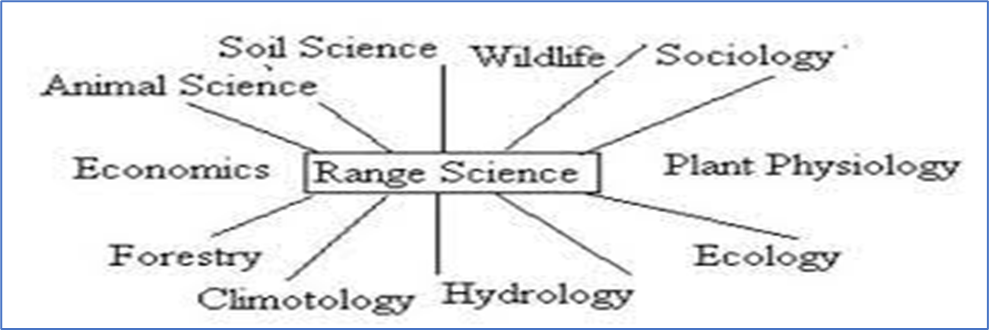Range science is the body
of scientific knowledge upon which range management should be based. Rangelands
are ecosystems where agriculture and conservation meet. Rangelands cover more
than half of the Earth’s land area and include prairie, grassland, savanna,
shrubland and chaparral, alpine meadows, wetlands and deserts. Rangelands are
dynamic ecosystems, teeming with biodiversity and driven by patterns of
climate, soil, and water, and have been used by humans for thousands of years.
Range land management
(also range management, range science, or arid-land management) is a
professional natural science that centers around the study of rangelands and
the "conservation and sustainable management [of Arid-Lands] for the
benefit of current societies and future generations." Range management is
defined by Holechek et al. as the "manipulation of rangeland components to
obtain optimum combination of goods and services for society on a sustained
basis.
As range scientists, we
seek to understand rangeland ecosystem patterns and processes to ensure
sustainable management. Range science provides students with knowledge and
experience to assess, monitor and manage rangeland resources. Using an ecosystem
perspective, students study the inter-relationships between a variety of plant,
soil, animal and social sciences. Range management is a
professional field whose aim is to ensure a sustained yield of rangeland
products while protecting and improving the basic range resources of soil,
water, and plant and animal life.
Application of Range Science in Range
Management
1.
The role of contemporary range science is
to develop an understanding of the processes that are important for the wise
management of rangelands. Range science and range management are complementary
but distinct endeavors. range management is a planning process in
which alternative management options are exposed to the decision-maker’s
values, and the option with the highest value is selected.
2. Range
science is the body of scientific knowledge upon which range management should
be based. As such, range science should be the set
of concepts and ideas that agree or are consistent with how natural processes
operate. Both are necessary for wise use of range resources.
3.
Range science is an integrative
discipline. As such, range scientists are in an ideal position to organize
multidisciplinary research. Indeed, the processes important to range scientists
and managers can only be studied by drawing upon expertise from many
disciplines.
4.
Scientists from other disciplines are
interested in pursuing questions that interest range scientists, and range
scientists should serve as a focal point for this kind of research on how range
can be managed.
5.
Traditionally, range science has described
components of range ecosystems in an attempt to provide information for
managers. This has been an extremely important first step in the development of
range science, and most management recommendations are currently based on
information generated by such efforts.
6.
Range Science is more concerned with how
things are arranged and how they function. Finally, scientists endeavor to
explain why natural processes function as they do. It is time for range science
to make the transition from the what to the how and why stages of development.
7.
The role of the manager (planner) from
that of the researcher (scientist) is difficult, because researchers are often
more intent on solving problems and providing management recommendations than
on providing fundamental understanding of process important in range
management.
8.
Modern range management utilizes the
concept of multiple use, which requires that all the resources of a rangeland
be managed simultaneously, using constant monitoring and adjustments to provide
a mix of material products and intangible assets that best satisfy the needs of
both landowners and the general public. Range management depends for its
effectiveness on range science, which is a body of knowledge drawn from
the botanical and zoological sciences as well as from ecology,
climatology, pedology (soil science), hydrology, and so on.








0 Comments